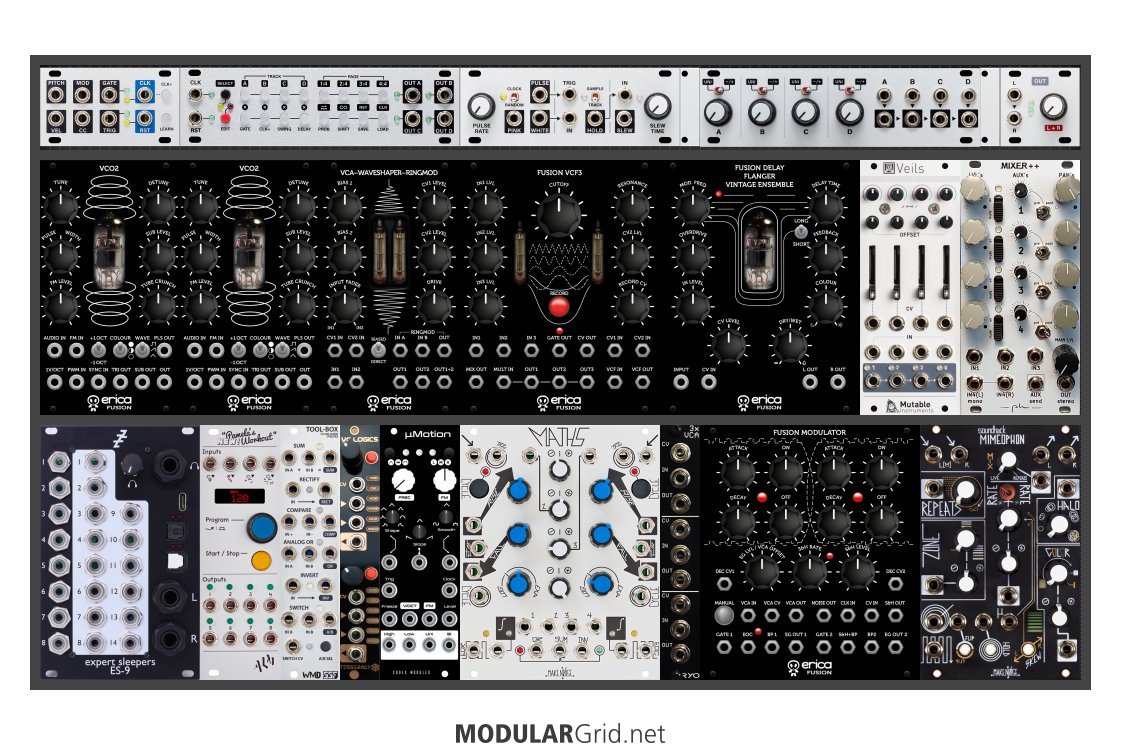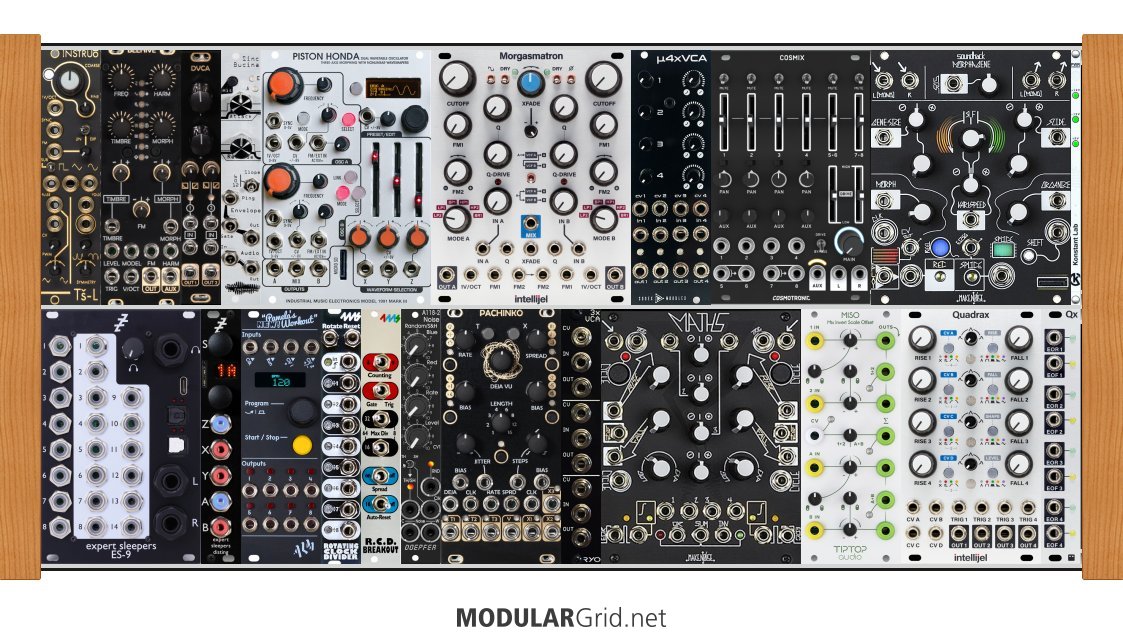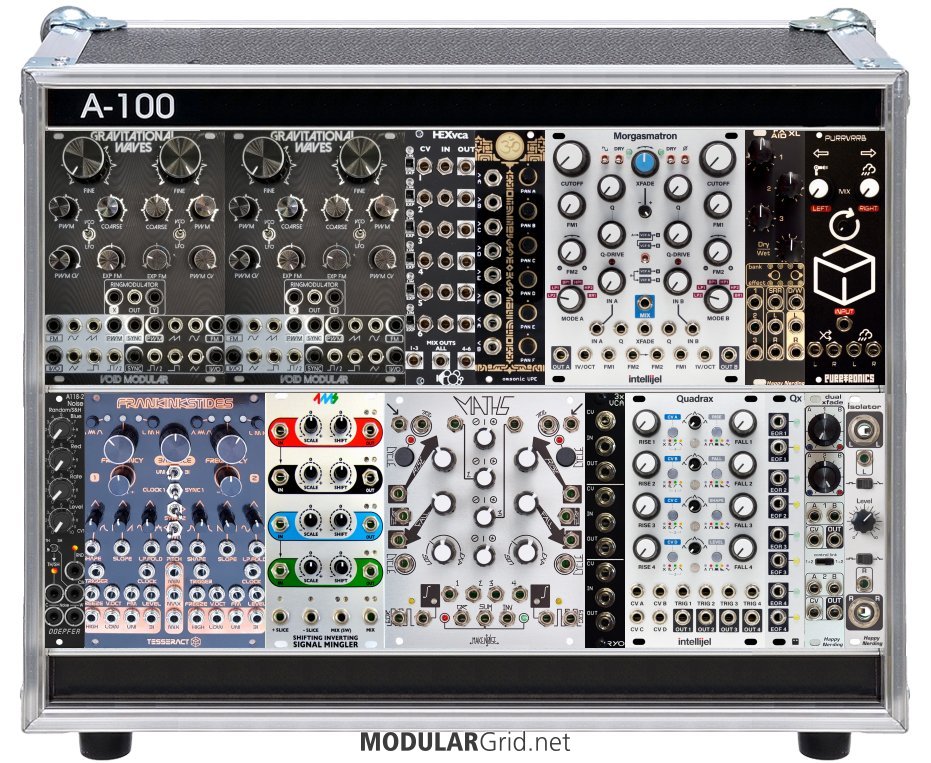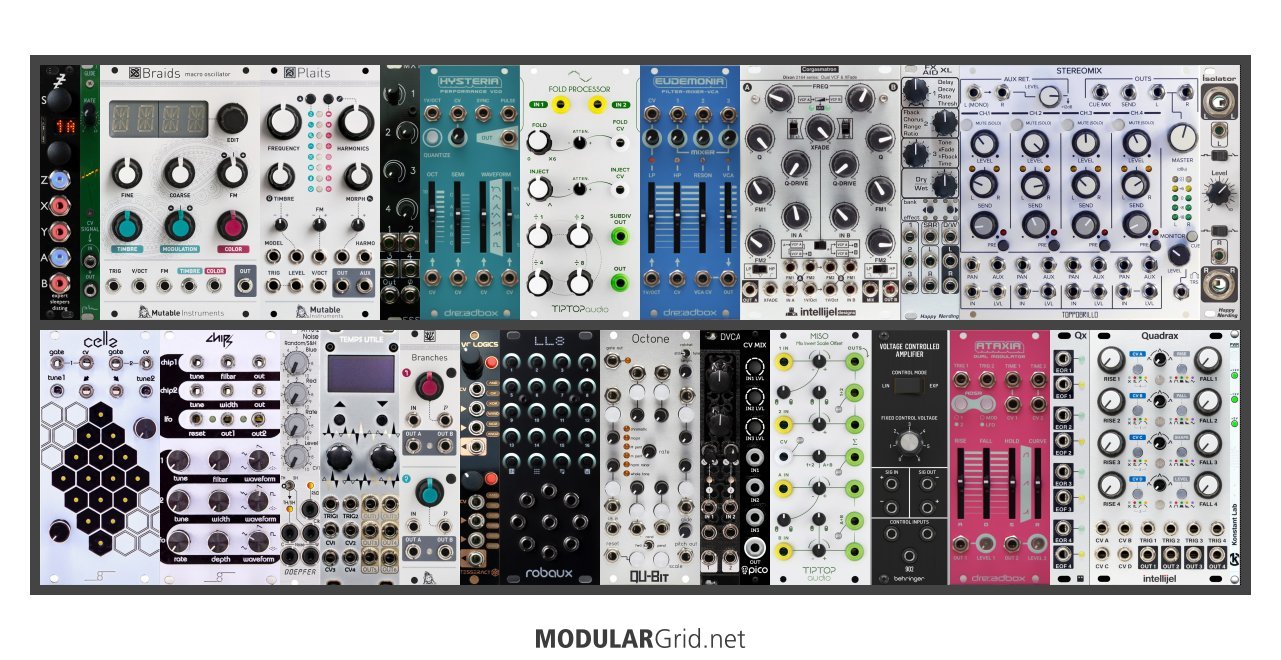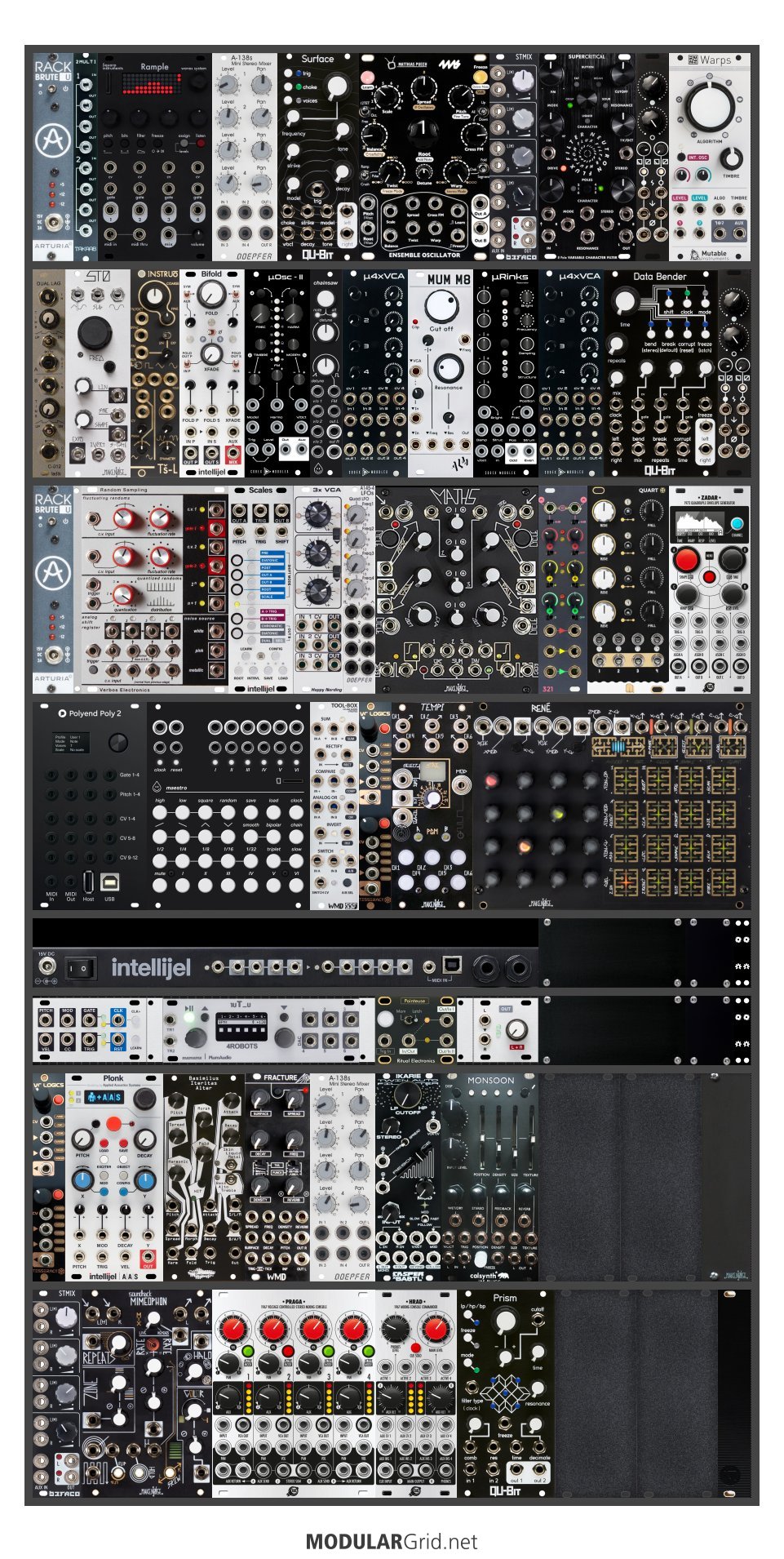As of late, I seem to be running across a lot of builds on here where the user has taken a synth and jammed it into a Eurorack cab. And yes, while there are synths you CAN do this with...this isn't as good an idea as you might be led to believe. And I do understand that this is often an issue that's resulted out of convenience, especially for live gigging builds, but even so, it's not the best idea. Here's why...
OK...let's say for the sake of argument that you have a very typical Eurorack cab; for this, I'm going to use a Tiptop Mantis, as they're easily available and also a great starter case with power. And we're going to take a fairly typical Eurorackable patchable such as a Moog Mother 32 as the "culprit" here. Now, that synth comes in its own 60 hp cab, which has power already that's optimized for the Mother 32. So...you CAREFULLY decase and disconnect it from the power, and then REcase it and connect it to the Mantis's power. Provided that something tiny that can cause a major disaster (such as a little wire snip on your workbench finding its way into the M32 or, even worse, the Mantis's power setup) hasn't happened, you now have a remainder of 148 hp to work with. Remember: a 2 x 84 cab only has 168 hp, and they're not the easiest things to do a major build in. If you want drums and sequencers and and and and...well, no. Not gonna happen now. You have this...THING...in there now, taking up loads of space while, at the same time, not really having 60 hp of functional density like you'd get from filling that 60 hp with proper Eurorack modules.
But that's not all...
Let's look at what you've spent here. A Mother 32 is $649 according to Sweetwater's site. And they have the Mantis at $335. So that's just under a grand right there. Now, you take the M32 out, stick it in the Mantis, and nothing's gone wrong...when you power it up, the M32 is all lit up and happy. And you've screwed your budget right then and there...
Huh? OK...let's look at the REAL costs here. A Tiptop Mantis has 208 powered hp, so for each hp: 335 / 208 = 1.61(ish). Therefore, each Mantis hp has an individual cost of $1.61. Now, to house a module in there, you can actually come up with a "cost-per-hp" figure. This is actually useful sometimes to see how your space vs. cost is working out in the build. But when you take the M32 out and put it into the Mantis, you then ALSO have to calculate the cost-per-hp for that, and the results are...well...
60 x 1.61 = 96.6. So, recasing and repowering the Mother 32 in its new cab actually results in having to factor that $96.60 into the aggregate cost of the Mother 32 itself. NOW your Moog costs $745.60...which you didn't pay for it, but it now COSTS that, because that $96.60 is the cost of the casing/powering of the Mother 32 that already HAS power and HAS a case! Plus, you LOSE those 60 hp...which should be used for casing and powering things that DON'T have those things already...to the M32.
Also, this is a bad trade-off, function-wise. So...what makes up a Mother 32? Well...you have a single VCO, single LFO, a multimode VCF, a two-stage EG, a CVable polarizer, an eight-step step sequencer, a clock, and a MIDI-in interface. Using pretty much bog-simple modules for this same functionality, I can jam that...with basic modules...into 54 hp. And I could fit it into that with even more complex modules, too. Or I could certainly fit that into a smaller space...this is just a basic module (mostly Doepfer) example. But the upshot here is that, in less than the M32's space, you can BUILD a vastly-improved complement of modules that can do what it does...and probably BETTER.
I really don't know how many times I've seen posts on MG where someone who's dropped a synth into their Eurorack is complaining about not having the space to do [INSERT NUMEROUS IDEAS HERE]. And the solution, inevitably, is very simple: TAKE THAT SYNTH OUT. Put it back where it belongs! Then, automagically, you HAVE SPACE. There's also no technical rationale for having it in there, either; I do use a modular which requires you to establish a groundplane across all of its cabs and to/from any other devices you use with it. In THAT situation, sure, putting an existing rackable modular in with the rest of it would fix that slightly-annoying technical limitation...but considering that you see this with formats such as Buchla or Serge, how much of a "limitation" is it, really? And with Eurorack, you use two-conductor patchcables...NOT single wires...so whenever you make a patch, you have the "hot" lead AND the ground right there already. No need for grounding follies!
Yes, yes...I know you see "pros" on YouTube who have this sort of configuration in their Eurorack systems. But just because they're on TV doesn't mean they're right; if everything on TV was "right", then we'd all be living in stratospheric condos and have flying cars like The Jetsons, except that any number of sinister forces would be trying to blow up the world on an hourly basis while everyone's traveling to remote locations every day to eat at secret gourmet-level hole-in-the-wall joints. And so on. You get the idea.
So if you can get that idea, it's not really a stretch to understand that people who get these things for free or "accommodation prices" are wanting to stick 'em right where you can see 'em...otherwise, the toy supply might dry up and their pristine set-like studios might actually have to see some REAL WORK to pay the bills! If these people blow up something they got for zip, well, they're out exactly that. If YOU do, though...kiss your ca$h goodbye! And that goes even if you DON'T detonate your new synth by having a tiny metal sliver off of one of your rack screws fall into it unbeknownst to you while recasing it.
But wait...why are these things ON Modulargrid, then? Simple: Modulargrid is a comprehensive reference resource, and if you need to figure out how your patching is going to work with one of these in your studio (but not in the Eurorack cab), that's why they're there. But, yet again...just because you can do something doesn't mean you SHOULD do it. And recasing your powered and cased synths is just the present-day equivalent to doing things like sawing the keyboard off of a perfectly-good synth so you can use it as a MIDI module. Very dumb, very destructive... and I know for a fact that we've lost an unknowable number of vintage analogs through this earlier iteration of dumbass.
And even if you figure that "I need this for convenience"...well, do you? Couldn't you BUILD the equivalent in 40-50 hp instead? Without the need for an Erica MScale or a trigger/CV converter for a Behringer K-2? C'mon, peepz...it's MODULAR. It's a circuitry SANDBOX. You can build whatever you like, and even wildly improve on it...so why limit your build like this, or incur expenses that are pretty much unnecessary? Think about that the next time you ponder whether your Pro-1 would be better in your A-100 case; I know that MINE is still in the OEM, and that's where it staying!

